SNVS052E September 1999 – April 2016 LM809 , LM810
PRODUCTION DATA.
- 1 Features
- 2 Applications
- 3 Description
- 4 Revision History
- 5 Pin Configuration and Functions
- 6 Specifications
- 7 Detailed Description
- 8 Application and Implementation
- 9 Power Supply Recommendations
- 10Layout
- 11Device and Documentation Support
- 12Mechanical, Packaging, and Orderable Information
6 Specifications
6.1 Absolute Maximum Ratings
see (1)(2)| MIN | MAX | UNIT | ||
|---|---|---|---|---|
| Input supply voltage | VCC | –0.3 | 6 | V |
| Output voltage | RESET, RESET | –0.3 | VCC + 0.3 | V |
| Input current | VCC | 20 | mA | |
| Output current | RESET, RESET | 20 | mA | |
| Rate of rise | VCC | 100 | V/µs | |
| Continuous power dissipation | 320 | mW | ||
| Lead temperature (soldering, 10 s) | 300 | °C | ||
| Ambient temperature range, TA | –40 | 105 | °C | |
| Maximum junction temperature, TJ(MAX) | 125 | °C | ||
| Storage temperature, Tstg | –65 | 160 | °C | |
(1) Stresses beyond those listed under Absolute Maximum Ratings may cause permanent damage to the device. These are stress ratings only, which do not imply functional operation of the device at these or any other conditions beyond those indicated under Recommended Operating Conditions. Exposure to absolute-maximum-rated conditions for extended periods may affect device reliability.
(2) If Military/Aerospace specified devices are required, please contact the Texas Instruments Sales Office/Distributors for availability and specifications.
6.2 ESD Ratings
| VALUE | UNIT | |||
|---|---|---|---|---|
| V(ESD) | Electrostatic discharge | Human-body model (HBM), per ANSI/ESDA/JEDEC JS-001(1) | ±2000 | V |
| Charged-device model (CDM), per JEDEC specification JESD22-C101(2) | ±200 | |||
(1) JEDEC document JEP155 states that 500-V HBM allows safe manufacturing with a standard ESD control process. Manufacturing with less than 500-V HBM is possible with the necessary precautions. Pins listed as ±2000 V may actually have higher performance.
(2) JEDEC document JEP157 states that 250-V CDM allows safe manufacturing with a standard ESD control process. Manufacturing with less than 250-V CDM is possible with the necessary precautions. Pins listed as ±200 V may actually have higher performance.
6.3 Recommended Operating Conditions
over operating free-air temperature range (unless otherwise noted)| MIN | NOM | MAX | UNIT | ||||
|---|---|---|---|---|---|---|---|
| VCC | Input voltage range | TA = 0°C to 70°C | 1.0 | 5.5 | V | ||
| TA = –40°C to 105°C | 1.2 | 5.5 | |||||
| ICC | Supply Current | VCC < 5.5 V, LM8xx: 4.63, 4.38, 4.00 |
TA = –40°C to 85°C | 18 | 60 | µA | |
| TA = 85°C to 105°C | 100 | ||||||
| VCC < 3.6 V, LM8xx: 3.08, 2.93, 2.63, 2.45 |
TA = –40°C to 85°C | 15 | 50 | ||||
| TA = 85°C to 105°C | 100 | ||||||
6.4 Thermal Information
| THERMAL METRIC(1) | LM809, LM810 | UNIT | |
|---|---|---|---|
| DBZ (SOT-23) | |||
| 3 PINS | |||
| RθJA | Junction-to-ambient thermal resistance | 252.0 | °C/W |
| RθJC(top) | Junction-to-case (top) thermal resistance | 113.3 | °C/W |
| RθJB | Junction-to-board thermal resistance | 53.5 | °C/W |
| ψJT | Junction-to-top characterization parameter | 9.9 | °C/W |
| ψJB | Junction-to-board characterization parameter | 52.6 | °C/W |
| RθJC(bot) | Junction-to-case (bottom) thermal resistance | — | °C/W |
(1) For more information about traditional and new thermal metrics, see the Semiconductor and IC Package Thermal Metrics application report, SPRA953.
6.5 Electrical Characteristics
VCC = full range, TA = –40°C to 105°C, unless otherwise noted. Typical values are at TA = 25°C, VCC = 5 V for 4.63, 4.38, and 4.00 versions, VCC = 3.3 V for 3.08 and 2.93 versions, and VCC = 3 V for 2.63 and 2.45 version(1).| PARAMETER | TEST CONDITIONS | MIN | TYP | MAX | UNIT | ||
|---|---|---|---|---|---|---|---|
| VTH | Reset Threshold(2) | LM8xx: 4.63 V | TA = 25°C | 4.56 | 4.63 | 4.70 | V |
| TA = –40°C to 85°C | 4.50 | 4.75 | |||||
| TA = 85°C to 105°C | 4.40 | 4.86 | |||||
| LM8xx: 4.38 V | TA = 25°C | 4.31 | 4.38 | 4.45 | |||
| TA = –40°C to 85°C | 4.25 | 4.50 | |||||
| TA = 85°C to 105°C | 4.16 | 4.56 | |||||
| LM8xx: 4.00 V | TA = 25°C | 3.93 | 4.00 | 4.06 | |||
| TA = –40°C to 85°C | 3.89 | 4.10 | |||||
| TA = 85°C to 105°C | 3.80 | 4.20 | |||||
| LM8xx: 3.08 V | TA = 25°C | 3.04 | 3.08 | 3.11 | |||
| TA = –40°C to 85°C | 3.00 | 3.15 | |||||
| TA = 85°C to 105°C | 2.92 | 3.23 | |||||
| LM8xx: 2.93 V | TA = 25°C | 2.89 | 2.93 | 2.96 | |||
| TA = –40°C to 85°C | 2.85 | 3.00 | |||||
| TA = 85°C to 105°C | 2.78 | 3.08 | |||||
| LM8xx: 2.63 V | TA = 25°C | 2.59 | 2.63 | 2.66 | |||
| TA = –40°C to 85°C | 2.55 | 2.70 | |||||
| TA = 85°C to 105°C | 2.50 | 2.76 | |||||
| LM8xx: 2.45 V | TA = 25°C | 2.41 | 2.45 | 2.49 | |||
| TA = –40°C to 85°C | 2.38 | 2.52 | |||||
| TA = 85°C to 105°C | 2.33 | 2.57 | |||||
| Reset Threshold Temperature Coefficient | 30 | ppm/°C | |||||
| VCC to Reset Delay(2) | VCC = VTH to (VTH – 100 mV) | 20 | µs | ||||
| Reset Active Timeout Period | TA = –40°C to 85°C | 140 | 240 | 560 | ms | ||
| TA = 85°C to 105°C | 100 | 840 | |||||
| VOL | RESET Output Voltage Low (LM809) | VCC = VTH(min), ISINK = 1.2 mA, LM809: 2.45, 2.63, 2.93, 3.08 | 0.3 | V | |||
| VCC = VTH(min), ISINK = 3.2 mA, LM809: 4.63, 4.38, 4.00 | 0.4 | ||||||
| VCC > 1 V, ISINK = 50 µA | 0.3 | ||||||
| RESET Output Voltage Low (LM810) | VCC = VTH(max), ISINK = 1.2 mA, LM810: 2.63, 2.93, 3.08 | 0.3 | |||||
| VCC = VTH(max), ISINK = 3.2 mA, LM810: 4.63, 4.38, 4.00 | 0.4 | ||||||
| VOH | RESET Output Voltage High (LM809) | VCC > VTH(max), ISOURCE = 500 µA, LM809: 2.45, 2.63, 2.93, 3.08 | 0.8 × VCC | V | |||
| VCC > VTH(max), ISOURCE = 800 µA, LM809: 4.63, 4.38, 4.00 | VCC – 1.5 | ||||||
| RESET Output Voltage High (LM810) | 1.8 V < VCC < VTH(min), ISOURCE = 150 μA | 0.8 × VCC | |||||
(1) Production testing done at TA = 25°C, over temperature limits specified by design only.
(2) RESET Output for LM809, RESET output for LM810.
6.6 Typical Characteristics
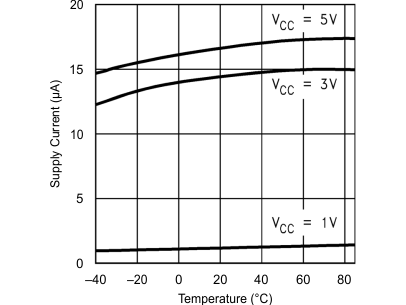 Figure 1. Supply Current vs Temperature
Figure 1. Supply Current vs Temperature(No Load, LM8xx: 2.63, 2.93, 3.08)
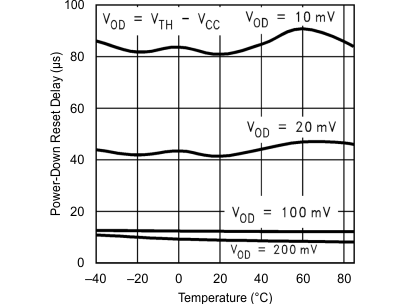 Figure 3. Power-Down Reset Delay vs Temp
Figure 3. Power-Down Reset Delay vs Temp(LM8xx: 2.63, 2.93, 3.08)
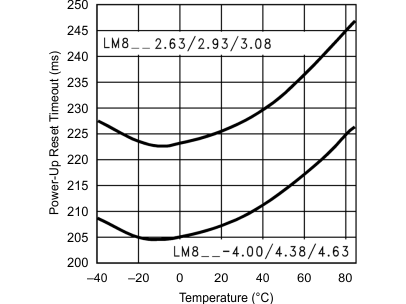 Figure 5. Power-Up Reset Timeout vs Temperature
Figure 5. Power-Up Reset Timeout vs Temperature
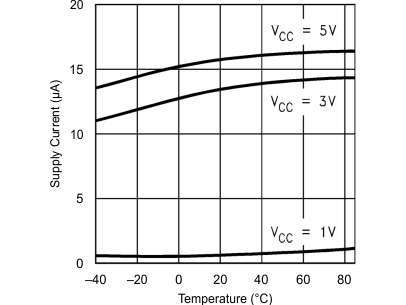 Figure 2. Supply Current vs Temperature
Figure 2. Supply Current vs Temperature(No Load, LM8xx: 4.63, 4.38)
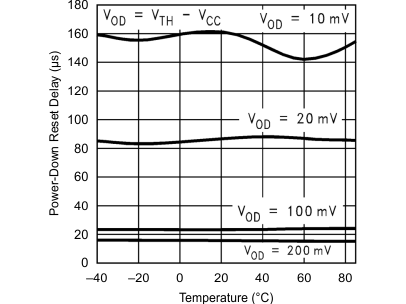 Figure 4. Power-Down Reset Delay vs Temperature
Figure 4. Power-Down Reset Delay vs Temperature(LM8xx: 4.63, 4.38)
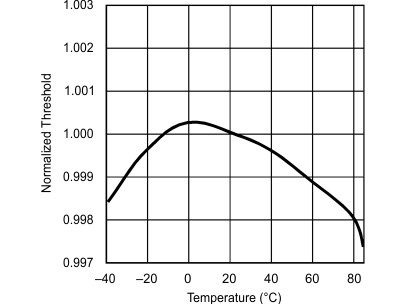 Figure 6. Normalized Reset Threshold vs Temperature
Figure 6. Normalized Reset Threshold vs Temperature